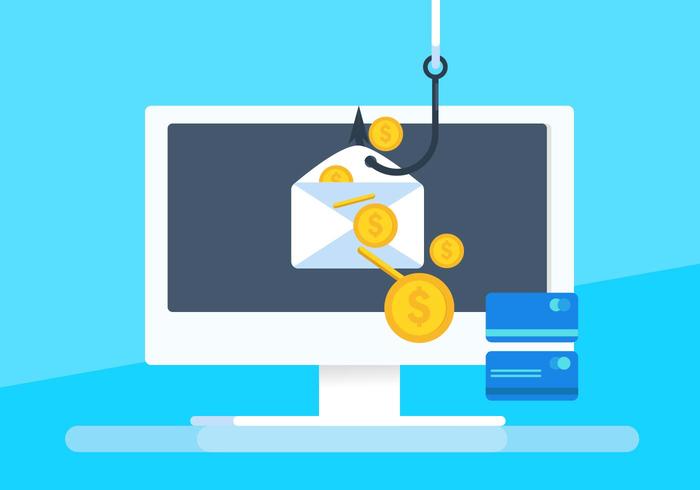Featured
Phishing doubled in 2018
Kaspersky Lab’s anti-phishing system prevented more than 482 million attempts to visit fraudulent web pages during 2018, a two-fold increase on 2017, when 236 million such attempts were blocked. Annual rises in the number of phishing attacks have been observed for the last few years, yet the figure for 2018 indicates a significant surge in the use and popularity of such attacks. These and other findings are documented in Kaspersky Lab’s new report, Spam and phishing in 2018.
Phishing is one of the most flexible types of ‘social engineering’ attacks, as it can be disguised in many ways and used for different purposes. To create a phishing page, all one needs to do is create a replica of a popular or trusted website, lure unwary users to the site and trick them into entering personal information. Such information often includes financial credentials such as bank account passwords or payment card details, or access credentials for social media accounts. It could also be a case of getting someone to open an attachment or click on a link that then downloads malware onto their computer. The consequences of such attacks may range from a loss of money to the compromise of an entire corporate network. Phishing attacks, especially of the malicious link or attachment variety are a popular initial infection vector for targeted attacks on organisations.
The rapid growth of phishing attacks in 2018 is part of a long running trend, with both 2017 and 2016 experiencing increases of 15% on the previous year. However, the 2018 figure marks a new peak.
The financial sector was hit especially hard: Over 44% of all phishing attacks detected by Kaspersky Lab technologies were aimed at banks, payment systems and online shops. This means that there were almost as many financial phishing attacks in 2018 as there were phishing attacks overall in 2017.
The country with the highest percentage of users attacked by phishing remained Brazil with 28% of all attacked users. Portugal, which was in 7th place a year ago, is now ranked second with 23% of users, while Australia moved from second to third, with 21% of those affected.
“The rise in the number of phishing attacks could be influenced by the increased efficiency of social engineering methods used for enticing users to visit fraudulent pages. 2018 was marked by the active exploitation of new schemes and tricks, such as scam-notifications, along with the perfection of old ones, for instance the traditional scams around Black Friday or national holidays. All in all, scammers are becoming better at taking advantage of important occasions happening around the world, like the FIFA world football championship,” said Tatyana Sidorina, security researcher at Kaspersky Lab.
Other findings of the spam and phishing in 2018 report include:
- The share of spam in mail traffic was 52.48%, which is 4.15 p.p. less than in 2017.
- The biggest source of spam this year was China (11.69%).
- 74.15% of spam emails were less than 2 KB in size.
- Malicious spam was detected most commonly with the Win32.CVE-2017-11882 verdict.
- The Anti-Phishing system was triggered 482,465,211 times.
- 18.32% of unique users encountered phishing.
Kaspersky Lab experts advise users to take the following measures to protect themselves from phishing:
- Always check online addresses in unknown or unexpected messages, whether it is the web address of the site to which you are directed, the link address in a message and even the sender’s email address, to make sure they are genuine and that the link in the message doesn’t cover another hyperlink.
- If you are not sure that the website is genuine and secure, never enter your credentials. If you think that you have may have entered your login and password on a fake page, immediately change your password and call your bank or other payment provider if you think your card details were compromised.
- Always use a secure connection, especially when you visit sensitive websites. Do not use unknown or public Wi-Fi without password protection. If you are using an insecure connection, cybercriminals can redirect you to phishing pages without your knowledge. For maximum protection, use VPN solutions that encrypt your traffic, such as Kaspersky Secure Connection.
- Use a proper security solution with behaviour-based anti-phishing technologies, such as Kaspersky Security Cloud and Kaspersky Total Security, which will warn you if you are trying to visit a phishing web page.
Find more details about spam and phishing in 2018 on Securelist.com.
Share
- Click to share on Twitter (Opens in new window)
- Click to share on Facebook (Opens in new window)
- Click to share on LinkedIn (Opens in new window)
- Click to email a link to a friend (Opens in new window)
- Click to share on Reddit (Opens in new window)
- Click to share on WhatsApp (Opens in new window)
- Click to share on Pinterest (Opens in new window)
| Thank you for Signing Up |


















